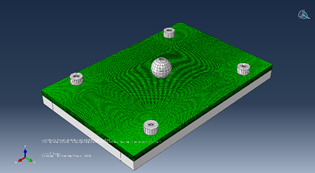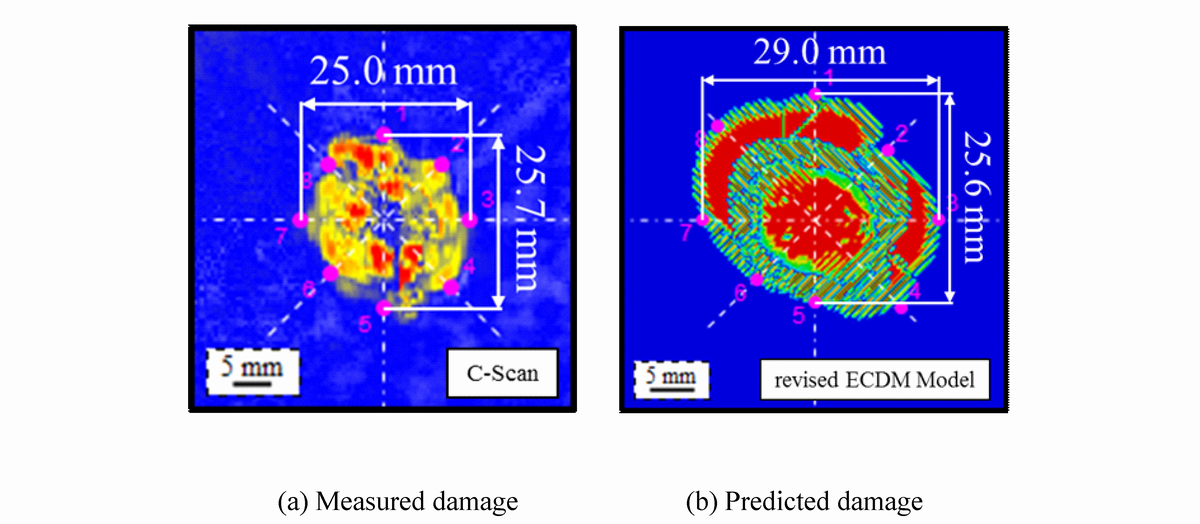Research on the aircraft structures and advanced composite materials
JAXA Supercomputer System Annual Report April 2016-March 2017
Report Number: R16E0011
- Responsible Representative: Yutaka Iwahori(Aeronautical Directorate, Structure and Advanced Composite Technology Reasearch Unit)
- Contact Information: Akinori Yoshimura(yoshimura.akinori@jaxa.jp)
- Members: Akinori Yoshimura
- Subject Category: Basic Research(Numerical analysis,other )
Abstract
Application of the composite materials will contribute to improving the performance of aircraft and spacecraft components. JAXA conducts researches for overcoming weaknesses of current composite materials, clarifying unknown aspects such as fracture mechanisms, improving performance and enabling application to design technology.
Goal
Objective
References and Links
Use of the Supercomputer
Supercomputer was used for the explicit finite element damage simulation of the drop-weight impact test against CFRP laminate.
Necessity of the Supercomputer
Huge number of elements are needed for detailed damage simulation in CFRP. Application of the supercomputer system makes such high-computational-cost calculation possible.
Achievements of the Year
Low-velocity impact damage simulation was performed using ECDM (Enhanced Continuum Damage Mechanics) model, which was damage model developed in JAXA. Low-velocity impact tests were performed based on the ASTM D7136 standard, and damage was measured by non-destructive inspection (NDI).
Simulation was performed using ABAQUS/Explicit 2016 on JSS2 system. Each ply of the CFRP laminate was modeled by one continuum shell element in the thickness direction. ECDM model was implemented using usersubroutine of ABAQUS.
Figure 1 shows model overview, and Figure 2 compares damage area predicted by simulation and measured damage area. Both results agree well, and the validity and precision of the model were demonstrated.
Publications
Presentations
1) Akinori Yoshimura, Masaya Ebina, Kenichi Sakaue, Anthony M. Waas, 'High Fidelity Simulation of Low Velocity Impact Behavior of CFRP Laminate', 32nd American Society for Composites Technical Conference, Oct. 2017, Purdue University, IN, USA (予定)
Computational Information
- Parallelization Methods: Process Parallelization
- Process Parallelization Methods: MPI
- Thread Parallelization Methods: n/a
- Number of Processes: 12
- Number of Threads per Process: 1
- Number of Nodes Used: 1
- Elapsed Time per Case (Hours): 340
- Number of Cases: 2
Resources Used
Total Amount of Virtual Cost(Yen): 127,220
Breakdown List by Resources
| System Name | Amount of Core Time(core x hours) | Virtual Cost(Yen) |
|---|---|---|
| SORA-MA | 0.00 | 0 |
| SORA-PP | 14,142.60 | 120,749 |
| SORA-LM | 0.00 | 0 |
| SORA-TPP | 0.00 | 0 |
| File System Name | Storage assigned(GiB) | Virtual Cost(Yen) |
|---|---|---|
| /home | 3.18 | 29 |
| /data | 31.79 | 299 |
| /ltmp | 651.04 | 6,141 |
| Archiving System Name | Storage used(TiB) | Virtual Cost(Yen) |
|---|---|---|
| J-SPACE | 0.00 | 0 |
Note: Virtual Cost=amount of cost, using the unit price list of JAXA Facility Utilization program(2016)
JAXA Supercomputer System Annual Report April 2016-March 2017




